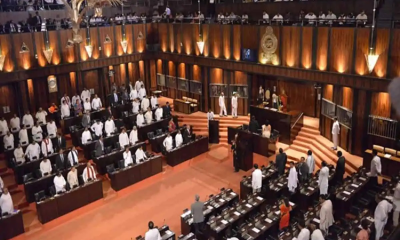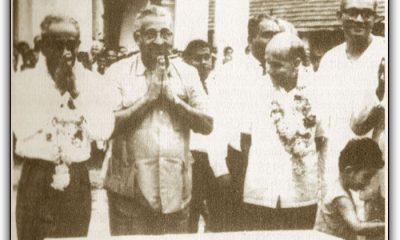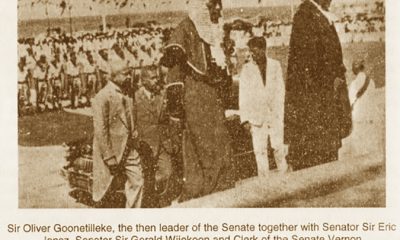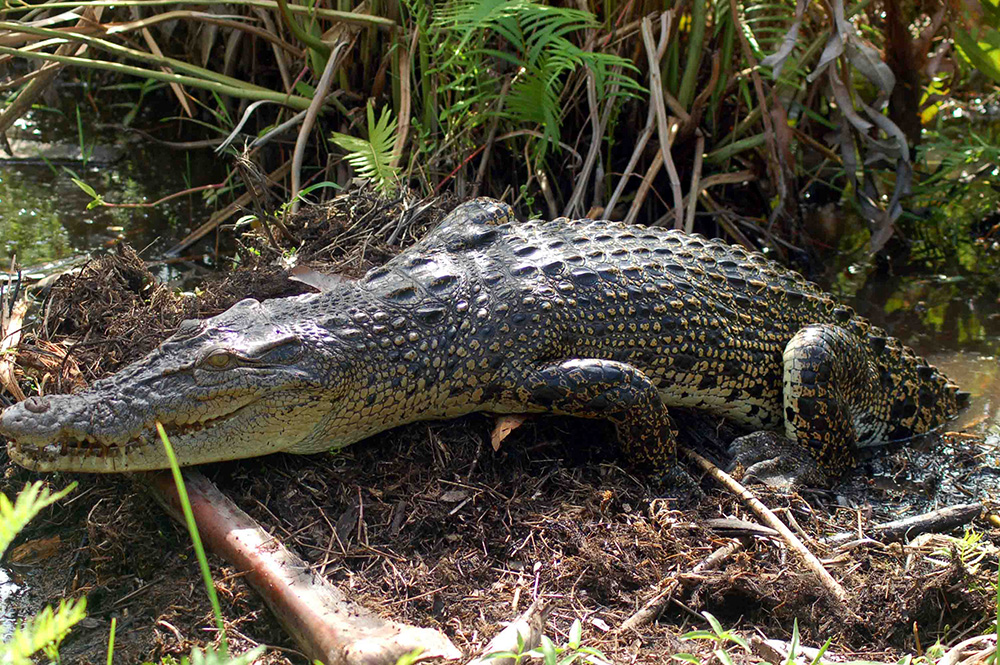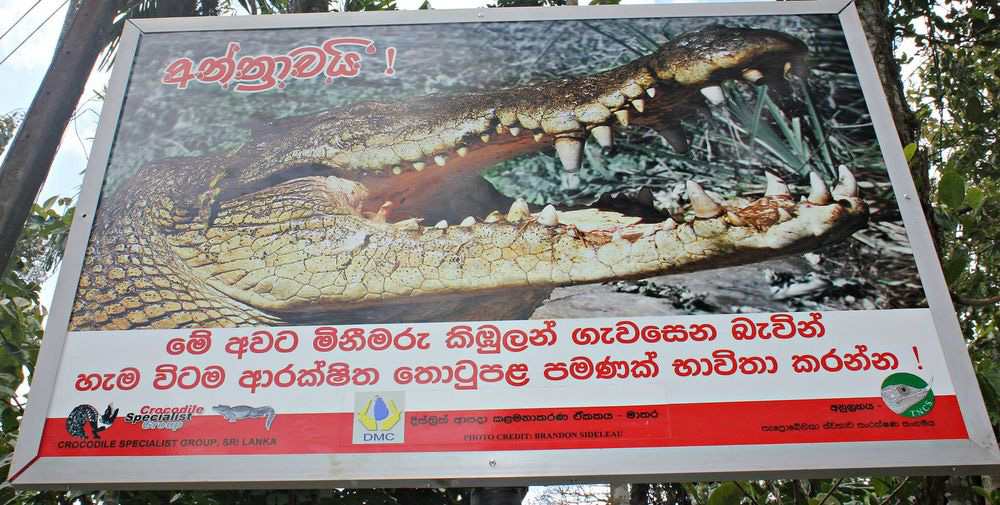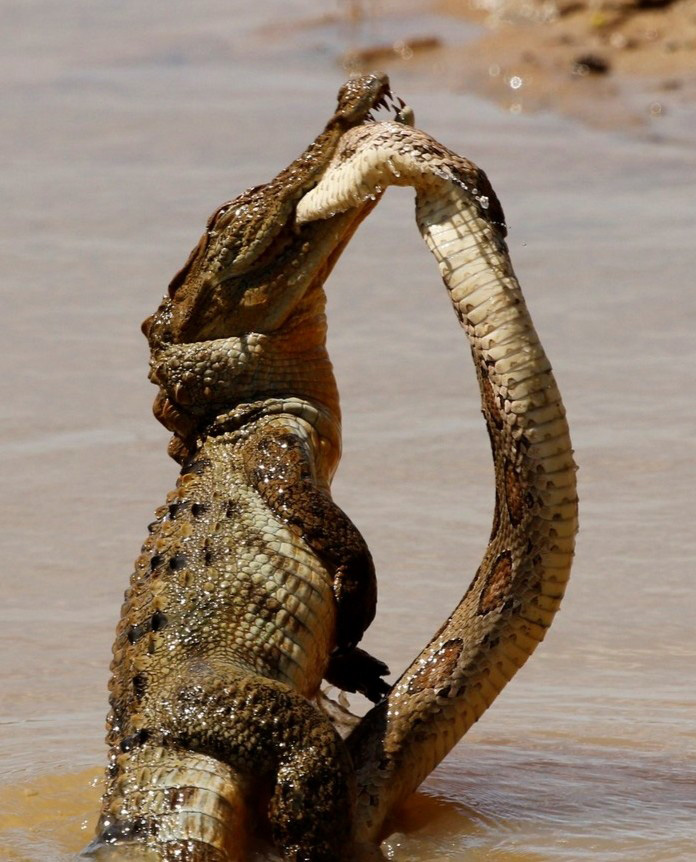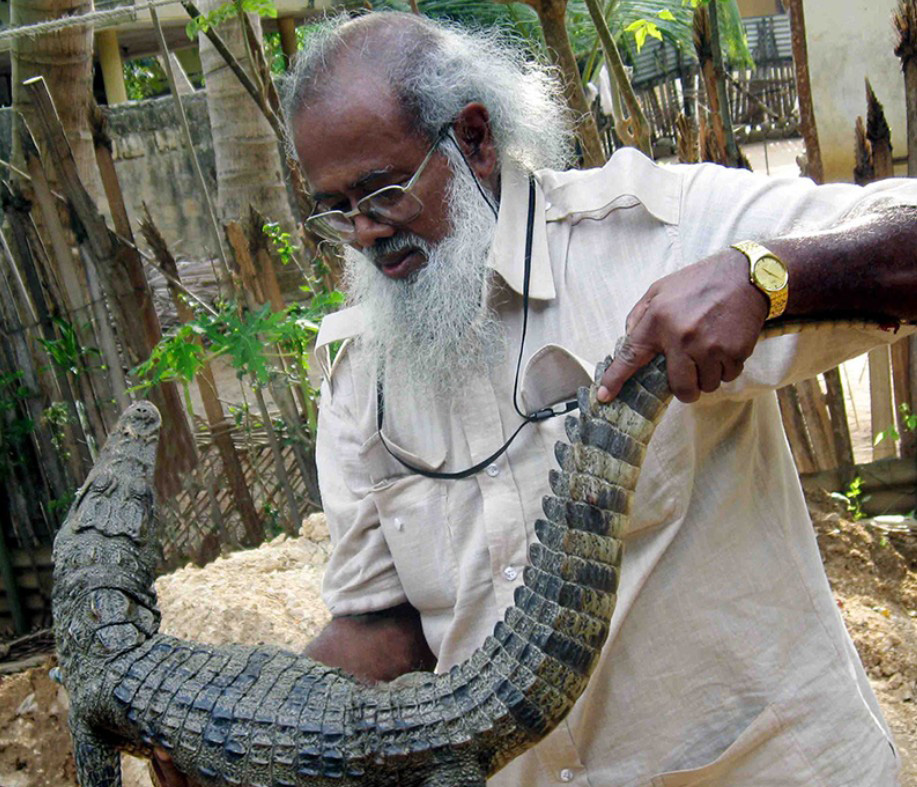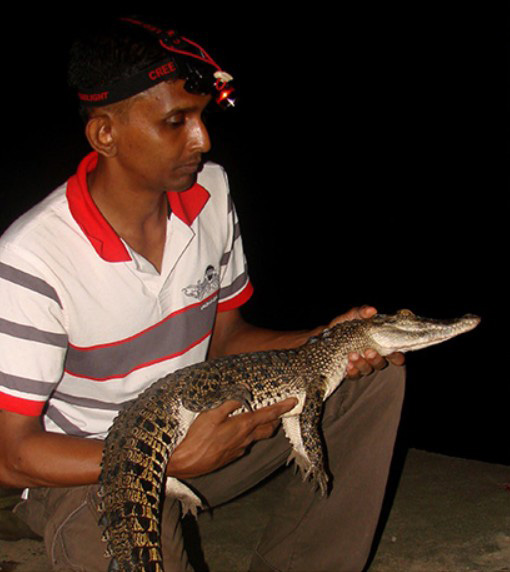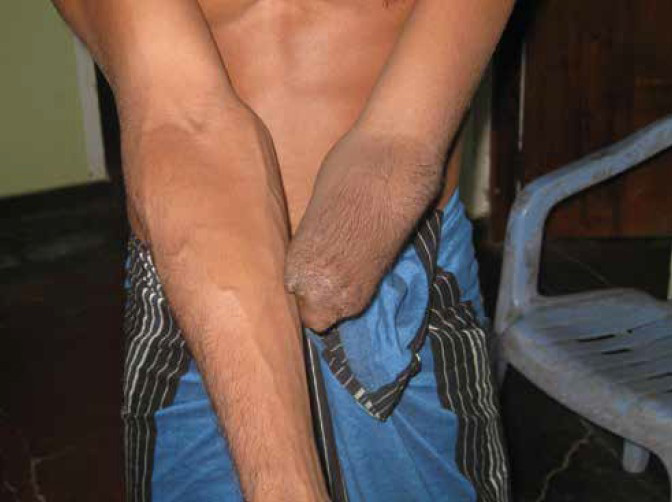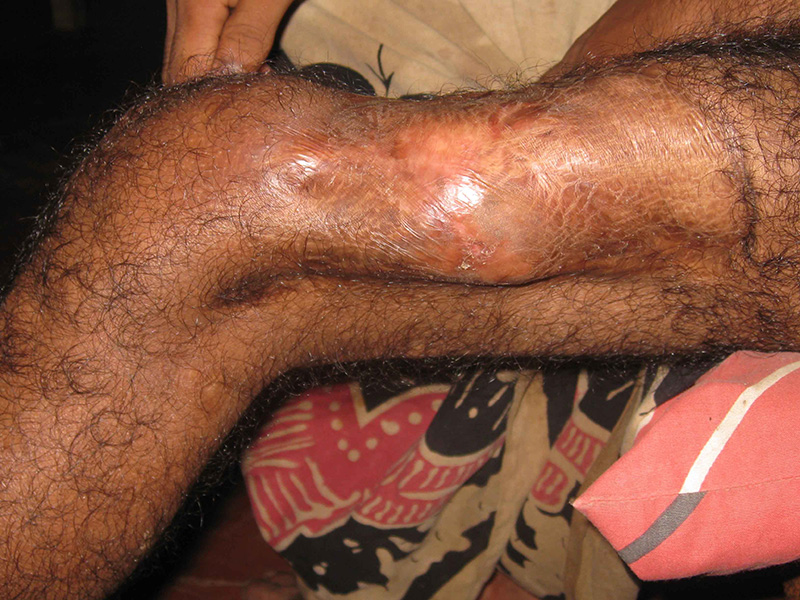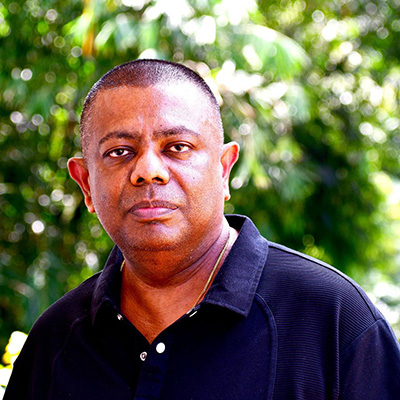Features
“I offer to resign” on Premadasa’s allegations of cabinet leaks and the 1962 coup d’etat
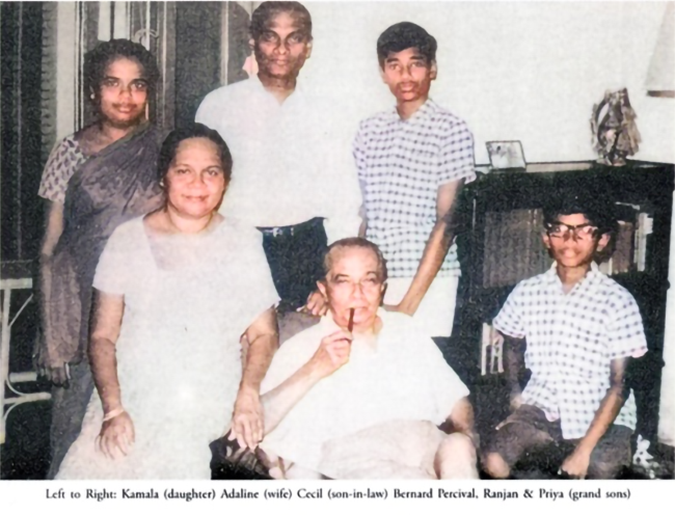
(Excerpted from Memoirs of a Cabinet Secretary by BP Peiris)
At about this time, one Premadasa (later President R. Premadasa), a UNP member of the Colombo Municipal Council, whom I did not know and whom I had not met or seen, made a speech in one of our public parks where he stated that, within five minutes of the conclusion of Sirimavo’s Cabinet meetings, the UNP had a full account of the discussions and the decisions reached at the meeting, but went on to add that they did not get their information from Cabinet officials.
I thoughts it was extremely kind of the gentlemen to pay me and my staff this unsolicited compliment. The next day the Times of Ceylon carried the speech on its front page, including the compliment paid to us. A few days later, a friend asked me whether I had read the attack on me in the Tribune, a paper to which I did not subscribe and did not read. He lent me his copy. The line that the Tribune took was that both Premadasa and the Times of Ceylon were wrong in their information, that Cabinet secrets leaked to the UNP through the top official (myself) in the Cabinet office, who “haunted the pub on the fringe of Colombo 1” – a reference to the Automobile Association of Ceylon of which I was an Honorary Life Member and a member of the Bar and Entertainments Committee – and that it was at this pub that the leaks took place.
The writer went on to add that, if the leaks were to be stopped, the top official should be removed. I was not going to take this insult lying down. A few minutes before the next Cabinet meeting, I told the Prime Minister the gist of the article and that I would not be attending the meeting if she had no confidence in me. I said I would resign. She said “Don’t be silly, Mr Peiris”. I told her that I was not placing on her the burden of coming to a decision and obtained her permission to raise the matter of confidence before the entire Cabinet.
When the Cabinet met, she informed the Ministers that I had a personal matter to raise, and when I finished reading the article aloud and said that I was prepared to go immediately to Queen’s House with my resignation, the following conversation took place between Felix Dias and myself:
F. D. Mr Peiris, why do you assume that the article refers to you?
B. P. Sir, I am the top official of the Cabinet Office, and the reference to the pub on the fringe of Colombo 1 is to the Automobile Association of which I am a member and which I visit fairly frequently.
F. D. Mr Peiris, don’t believe everything you read in the newspapers these days. I speak for the entire Cabinet when I say that we have absolute confidence in your integrity and loyalty.
B. P. Sir, I thank you for that. The matter may therefore be regarded as closed. And so, I continued as an officer of the Cabinet.
Towards the end of 1961, there was a whisper of a series of strikes planned for the new year with a view to paralyzing the Government. Strikes in the public and private sector took place on January 5, 1962. Valuable equipment at Radio Ceylon was damaged and army technicians were put on the job of restoring the radio and transmissions. The strike spread to the Port of Colombo, the Transport Board and the commercial banks, and the Cabinet was meeting almost daily to review the situation to prevent it spreading, particularly to the plantations. The Governor-General, a former Civil Defence Commissioner, was again given complete control of operations.
In the midst of its other problems, the Government had to meet a new situation. In the late Prime Minister’s assassination case, the trial judge had convicted one accused of murder and two others of conspiracy to murder, and had sentenced all three accused to death. On appeal, the Court of Criminal Appeal, on an interpretation of the law, converted the sentence on the charge of conspiracy, from death to one of life imprisonment. The Government was annoyed. It decided that the law should be clearly stated with retrospective effect, namely, that the penalty for conspiracy to murder should be, not life imprisonment, but death.
The Capital Punishment (Special Provisions) Bill was accordingly drafted by the Legal Draftsman under vehement protest and presented in the House of Representatives. It was expected that all three readings would be moved in one day and the item was placed at the top of the Order Paper. A week later this dropped to the bottom because all the accused appealed to the Privy Council. The Crown did the same. Both applications were for special leave to appeal and leave was refused in both cases. The matter became stale and, I believe, the Bill was allowed to lapse.
Another amazing proposal came before the Cabinet in February 1962.1 referred earlier to the continuance in force of certain emergency regulations to enable the detention of certain persons suspected of being connected with a coup to overthrow the Government. It was in the previous month, January, that the proposed coup had failed because someone, at the last moment, got the jitters and spilt the beans. At midnight, a Deputy Inspector-General of Police was arrested. In the succeeding days, other arrests of top ranking officers of the Army, Navy, Police, Civil Service and a few civilians followed. The total number arrested was twenty-nine.
How were they to be tried and what was the punishment to be meted out to them? In some countries today I suppose they would have been shot without trial. But here, Sirimavo had assured the people that she was following the policies of her late husband and that her government was democratic with an admixture of socialism. The Government decided to make drastic and unusual changes in the law.
I have never seen a man more unhappy than Percy de Silva, the Legal Draftsman, who was at this time, preparing, with angry curses under his breath, draft after draft, as fresh instructions, not always consistent one with another, reached him daily from the Government.
Here is a summary of the changes in the law which the Legal Draftsman was directed to put into proper legal form. Instead of a trial by jury, there should be a Trial-at-Bar, that is, a trial before three Judges of the Supreme Court sitting without a jury. There should be no preliminary magisterial inquiry and proceedings should be initiated in the Supreme Court. A Bench is normally appointed by the Chief Justice but, in this case, that power should be vested in the Minister of Justice. The penalty for the offence might be a sentence of death. Bail should be refused unless authorized by the Attorney-General. Confessions made to police officers should be made admissible in evidence.
The trial against any of the accused persons could be commenced and continued in his absence. The judgment of the Court should be declared to be final, and the right of the accused, if convicted, to appeal to the Court of Criminal Appeal should be taken away. The right of the subject to appeal to Her Majesty would also have been taken away if the Government only had the power. And, when everything was over and the accused had been convicted (or acquitted) these new changes in the law should cease to have any effect and the old law should automatically revive.
This atrocious piece of draft legislation shook the lawyers both in Hultsdorp and the outstations who still had respect for the sanctity of the law and for fair play and justice. After these proposals had been discussed by the Cabinet and finally approved, the Legal Draftsman was given two days time to prepare the complicated piece of legislation.
Wild rumours were gathering momentum involving the Governor-General Sir Oliver Goonetilleke, Dudley Senanayake, Sir John and anyone else on whom the scandalmongers desired to use the tar brush. At the Cabinet meeting just referred to, the Prime Minister asked me whether the Governor-General had inquired from me whether he had the power to dissolve Parliament without her advice. How this got out I do not know. I can only assume that the conversation that the Governor-General had with me on the telephone had been tapped. And that was not the first time he had discussed matters constitutional with me.
I told the Prime Minister that that was not what the Governor-General had asked me. He had asked me to look up my books and let him know whether he had the constitutional power to dismiss his Prime Minister and his entire Cabinet and I had advised him that he had such power but would have to find, without going to a general election, an alternative government which would take responsibility for his decision to dismiss. The Prime Minister asked me how long ago that was and I said it was about three months. She asked me what his reason could be for asking me the question.
I told her that when the Governor-General asked me a question, it was not open to me to ask him another, that he had put constitutional questions to me before, and that it was probably because he thought that I knew my subject. In a ruminative mood at home, it struck me that, some months before, W. Dahanayake, M. P. had made a public speech to the effect that the country was going to the dogs because of mismanagement by the Government and that it was time that the Governor-General sacked the whole bunch and formed a National Government. On inquiry from the newspapers, I was told that this speech was published in the Times of Ceylon of October 2, 1961, and I told the Prime Minister so; it did not appear to me have any connection with the coup.
On February 13, Felix Dias, Minister of Finance, made what he called a factual statement on the coup d’etat, He stated that the whole purpose of the coup was undoubtedly to overthrow the Government on the night of January 27. The statement continued: “The Government takes a very serious view of the abortive coup d’ etat. It is a comforting thought that most of the regular units of the army were unaffected by the spirit of disloyalty that manifested itself among certain officers who have been involved. In the Police too, it is fortunate that a large number of loyal officers remain who are capable of giving valuable service to the Government at this critical time. It is particularly satisfactory that the majority of the rank and file, both in the army and in the police remain completely loyal to the Government and the country.”
He added that the opportunity must not however be lost to effect complete and radical reforms in the Police Service, in the Armed Services and indeed in the public service. Many Army officers and Police officers who had participated in the coup had bitterly regretted their action and one army officer committed suicide in consequence of his participation. It was essential that deterrent punishment of a severe character should be imposed upon all those who were guilty of this attempt to inflict violence and bloodshed on innocent people throughout the country for pursuit of reactionary aims and objectives. The investigations would therefore proceed to their logical end. The Government was determined to do its duty by the people.
In view of this factual statement and the floating rumours, Sir Oliver voluntarily submitted himself to interrogation, but the Police did not dare to question Her Majesty’s representative. My own humble opinion at the time was that the step he took was most unbecoming of the office he held and the respect due to him. Efforts were now made to remove him from office. It was said that the Queen’s permission had been sought to question the Governor-General on the part he was alleged to have taken in the coup, and that a reply had been received that such a procedure would be unusual and unconventional. The next move was to have the Governor-General removed from office.
Here, the Queen had to act on the advice of Her Prime Minister of Ceylon and the Prime Minister advised removal. At very short notice, Sir Oliver’s successor was announced from the Palace – Mr William Gopallawa, M.B.E., our Ambassador in Washington. Whatever Sir Oliver’s other faults may have been, there was no doubt that he carried his office with great dignity during his long term of nearly eight years as the Queen’s representative in the land. After a long and unique record of distinguished service to his country in many capacities, he took his final bow and left Queen’s House on March 1, 1962.
The new Governor-General was sworn in the next day. His Excellency announced that he would give up the trappings of office, that is, the official uniform, the helmet and plumes, the sword and medals, and that he would wear a plain cloth and banian.
It was said that the Queen’s permission was again sought to question Sir Oliver after he ceased to be Governor-General and that the Government had received a reply from a constitutional sovereign that she was unable to intervene in a matter between the Government of Ceylon and a private citizen but that she hoped that no steps would be taken which would bring dishonour on the high office of Governor-General in view of possible repercussions in other parts of Her Commonwealth. The Government ordered that Queen’s House staff should be questioned first and that Sir John Kotelawala, Mr Dudley Senanayake, Mr J. R. Jayewardene, Mr Philip Gunawardena and Dr N. M. Perera be also questioned.
I was then asked whether I had any objection to making a statement to the police regarding Sir Oliver’s question to me about his constitutional powers in the dismissal of a cabinet. I said I had none and my statement was recorded on February 28,1962. I was placed in the most embarrassing position because the Prime Minister told me that my statement to the Police had been shown to Sir Oliver, who then had made a statement somewhat as follows:
I have known Peiris from the days when I was Civil Defence Commissioner and he was an Assistant Legal Draftsman. He is a straight and honest man of unquestioned integrity. If Peiris says that I spoke to him on the telephone and asked him this question, I will accept his statement as true. But the fact is that I did not speak to Peiris. It is quite likely that someone else put the question to him imitating my voice.
Sir Oliver, on relinquishing office, left Ceylon on a well-deserved holiday. The Hindu of March 2, 1962, carried the following editorial:
The cryptic announcement from Colombo of the appointment of Mr Gopallawa as the Governor-General of Ceylon in succession to Sir Oliver Goonetilleke only serves to deepen the mystery surrounding the Island’s affairs for some time. Stringent Press censorship has made matters worse and it may be anybody’s guess what is happening and why. There has been no announcement so far that Sir Oliver, an elder statesman commanding considerable respect within the country and outside, had offered to resign. When his name was stated to have been mentioned by suspects interrogated in connection with the recent reported attempt at a coup d’etat, he had offered to be questioned.
The Government spokesman who should have known the facts expressed disbelief in the suggestion that the Governor-General had anything to do with the attempted coup and apparently viewed with disfavour Opposition demands for his removal. He had mentioned that the Queen had been informed by cable of the position. The Governor-General of Ceylon is appointed by Her Majesty, and, under the 1947 Order in Council, may exercise in the Island, during her Majesty’s pleasure, such powers, authorities and functions as are assigned to him. His appointment is also to be made on the advice of the Prime Minister of the Dominion.
Are we to infer that a sufficiently strong case exists for the Ceylon Government to advise the Queen to order the removal from office of Sir Oliver and the appointment of a successor recommended by the Ceylon Prime Minister? Since other prominent names are also said to have been mentioned by suspects, notably Sir John Kotelawala and Mr Dudley Senanayake, former Prime Ministers, the drastic action in one case can only set speculation rife and add to the prevailing uncertainty in the Island.
The long and heated debate in the Ceylon House of Representatives a fortnight ago has been the only source of information from which any inference could be drawn about the attempted coup and its possible ramifications. And sections of the Opposition did not waste this opportunity to make political points of “right” and “left”. With censorship clamped down, and the prolonged emergency, the people of Ceylon are perhaps the most mystified by the extraordinary developments in the country.
From the assassination of Prime Minister Bandaranaike two years ago to the unprecedented removal from office of the Governor-General this week, it has been a crisis to crisis existence for the hard-pressed Island. The people can well see in the recent developments not only a threat to the stability of the Island’s administration, but to their democratic right to choose their Government and remove it. If inflation, unemployment and a strike-wave had struck at their economic well-being, the attempted coup and the subsequent emergency Bill seeking to bypass judicial processes and the rule of law should be causes for even greater disquiet.
It is no doubt the prime duty of the Government to unearth the conspiracy to overthrow the Government by force, if there had been such a one. But in the process, all care should be taken to preserve the spirit as well as the letter of democracy, and also steer the country clear of any kind of involvement in cold war politics. The suggestion of foreign inspiration for the coup has been here, but so many suggestions have been made in this context, some mostly tactical, that one would hope this too belongs to that category.
And now, the Bill to deal with the coup suspects, which the Legal Draftsman was asked to prepare within two days, was presented in Parliament under the title of the Criminal Law (Special Provisions) Bill. It was severely criticized by all parties of the Opposition. Those in favour of the Bill argued that our former British masters did not foresee a situation where evil men would conspire to arrest the Prime Minister and other ministers and confine them in a dungeon, and that it was necessary to bring the law up to date.
Against this, it was asked why it was proposed to change the law, to empower the Minister of Justice instead of the Chief Justice to nominate the Bench for the proposed Trial-at-Bar. One member of Parliament pleaded that, for the sake of the integrity of our courts of law, the normal process of the selection of the Bench should be left to the discretion of the Chief Justice. The Honourable member for Galle pointed out that you may not be able to stop an appeal to the Queen.
It was also pointed out in Parliament that what the Government was trying to do was to enact a new offence, relate it back to the time of the commission of the offence, and charge the offenders. One remember commented “If this Bill gets into the Statute Book in the form in which it is presented, we would become the laughing stock of the World. It is possible that this matter might be taken up by the United Nations or by the International Jurists or even by our constitutional experts.”
On behalf of the Government, Finance Minister Felix Dias admitted that there were many things in the Bill of an unusual character. He appealed to the members not to oppose the Bill. The debate dragged on.
The General Council of Advocates in Ceylon passed the following resolution:
The General Council of Advocates in Ceylon vehemently opposes the Criminal Law (Special Provisions) Bill in that
(1) it removes the safeguards which are designed to ensure as far as possible a fair investigation and a fair trial;
(2) it empowers the Minister of Justice to choose a Bench of Judges for a particular case; and
(3) it deprives an accused person of the cherished and fundamental right of appeal.
The Bill, after a long debate, was passed by both Houses and came on the Statute Book as the Criminal Law (Special Provisions) Act, No 1 of 1962.
The International Commission of Jurists in Geneva took notice of the new law. They expressed “profound concern” at legislation in Ceylon following the alleged attempted coup. Many of the provisions of this Law, they said, were entirely contrary to the generally accepted principles of the rule of law. The Commission asked permission for an observer to attend the trials, expected shortly, of those arrested in connection with the coup. The Commission noted that investigations into the coup were being conducted by members of the Cabinet themselves with police approval. They added that, apart from the irregularity of this procedure, a specially passed emergency regulation prohibited the persons arrested from being visited by lawyers.
Sir Leslie Munro, Secretary-General of the Commission, commented on some features of the law which were open to criticism. These included the retrospective nature of the law, the provision that hearsay evidence may be taken into account and denial of the right of appeal.
I pointed out to the Cabinet that the validity of the Criminal Law (Special Provisions) Act was likely to be contested in court as the Act
one Official Language from January 1, 1961 ( the point was raised at the first trial). If the point succeeded, all the “culprits” would escape. And, if the point was upheld in one case, it would apply to all the other laws passed since January 1,1961. The Cabinet thanked me for bringing the matter to their notice, left an agenda of forty-two items aside, and discussed the problem.
Ministers said that they could not take a risk in this case and that, if there were any doubts as regards the correctness of the law, the doubts ought to be removed by fresh legislation. After, discussion, the Minister of Justice was told to a have Bill drafted immediately to clarify the position. The Bill was drafted, the Parliamentary Session was about to come to an end, and the Government hesitated to present the Bill because of its serious political implications. The Bill validated all Acts passed in English and proposed to enact that “Notwithstanding anything in any other law, the English language may continue to be used for the purpose of drafting legislation to be enacted after the date of the commencement of this Act until such date as my be determined by the Cabinet of Ministers”.
The Opposition and the Tamil community would have been given a powerful weapon for attacking the Government. Why was the Bill restricted to the English language? Why not the Tamil language? Is the Official Language Act unenforceable, and if it is impracticable to enforce it, why not repeal it? And numerous other arguments with the only object of embarrassing the Government.
The Prime Minister, a blunt and outspoken woman said “This is what happens when we try to go too fast”. Felix Dias said that he had consulted the Attorney-General Jansze who had advised “Let lying dogs sleep” meaning, do not introduce the Bill. Some of the Ministers attacked the bona fides of the Attorney-General in giving that opinion. They thought that the Attorney-General was trying to leave a loophole to allow the coup suspects to escape. One Minister attacked his honesty as being anti-Government.
I have known Jansze for several years. He was an honest, upright and God-fearing man, an honest and honourable lawyer who did not hesitate to give his opinion on a matter of law and did not care whether that opinion suited the party asking it or not. In view of the Attorney-General’s opinion, the Government decided not to proceed with the Bill.
Under the new Act, No. 1 of 1962, the Minister of Justice, named the Judges for the Trial-at-Bar of the coup suspects – T. S. Fernando, L. B. de Silva and Sri Skanda Rajah. Charges were served on the accused and the preliminary steps taken to hold the trial.
At the trial, Attorney-General Jansze led for the Crown with Solicitor-General Tennekoon and several Crown Counsel. For the defence, there appeared G. G. Ponnambalam, E. G. Wickramanayake, H. W. Jayewardene, A. H. C. de Silva, all Queen’s Counsel, supported by an array of juniors. It was rumoured that defence counsel were appearing pro deo. Objection was taken to the jurisdiction of the court on the ground that it was wrongly constituted and the objection was upheld. The Judges proved, if proof were at all necessary, that the Supreme Court is not and never had been, a stooge of the Executive. In upholding the objection, the court said:
For reasons which we have endeavoured to indicate above, we are of opinion that because:
(a) the power of nomination conferred on the Minister is an interference
with the exercise by the Judges of the Supreme Court of the strict judicial power of the State vested in them by virtue of their appointment in terms of section 52 of the Ceylon (Constitution) Order in Council, 1946, or in derogation thereof, and
(b) the power of nomination is one which has hitherto been invariably exercised by the Judicature as being part of the exercise of the judicial power of the State, and cannot be reposed in anyone outside the Judicature, Section 9 of the Criminal Law (Special Provisions) Act, No. 1 of 1962, is ultra vires the Constitution.
Features
When floods strike: How nations keep food on the table

Insights from global adaptation strategies
Sri Lanka has been heavily affected by floods, and extreme flooding is rapidly becoming one of the most disruptive climate hazards worldwide. The consequences extend far beyond damaged infrastructure and displaced communities. The food systems and supply networks are among the hardest hit. Floods disrupt food systems through multiple pathways. Croplands are submerged, livestock are lost, and soils become degraded due to erosion or sediment deposition. Infrastructural facilities like roads, bridges, retail shops, storage warehouses, and sales centres are damaged or rendered inaccessible. Without functioning food supply networks, even unaffected food-producing regions struggle to continue daily lives in such disasters. Poor households, particularly those dependent on farming or informal rural economies, face sharp food price increases and income loss, increasing vulnerability and food insecurity.
Many countries now recognie that traditional emergency responses alone are no longer enough. Instead, they are adopting a combination of short-term stabilisation measures and long-term strategies to strengthen food supply chains against recurrent floods. The most common immediate response is the provision of emergency food and cash assistance. Governments, the World Food Programme, and other humanitarian organisations often deliver food, ready-to-eat rations, livestock feed, and livelihood support to affected communities.
Alongside these immediate measures, some nations are implementing long-term strategic actions. These include technology- and data-driven approaches to improve flood preparedness. Early warning systems, using satellite data, hydrological models, and advanced weather forecasting, allow farmers and supply chain operators to prepare for potential disruptions. Digital platforms provide market intelligence, logistics updates, and risk notifications to producers, wholesalers, and transporters. This article highlights examples of such strategies from countries that experience frequent flooding.
China: Grain Reserves and Strategic Preparedness
China maintains a large strategic grain reserve system for rice, wheat, and maize; managed by NFSRA-National Food and Strategic Reserves Administration and Sinograin (China Grain Reserves Corporation (Sinograin Group), funded by the Chinese government, that underpins national food security and enables macro-control of markets during supply shocks. Moreover, improvements in supply chain digitization and hydrological monitoring, the country has strengthened its ability to maintain stable food availability during extreme weather events.
Bangladesh: Turning Vulnerability into Resilience
In recent years, Bangladesh has stood out as one of the world’s most flood-exposed countries, yet it has successfully turned vulnerability into adaptive resilience. Floating agriculture, flood-tolerant rice varieties, and community-run grain reserves now help stabilise food supplies when farmland is submerged. Investments in early-warning systems and river-basin management have further reduced crop losses and protected rural livelihoods.
Netherlands, Japan: High-Tech Models of Flood Resilience
The Netherlands offers a highly technical model. After catastrophic flooding in 1953, the country completely redesigned its water governance approach. Farmland is protected behind sea barriers, rivers are carefully controlled, and land-use zoning is adaptive. Vertical farming and climate-controlled greenhouses ensure year-round food production, even during extreme events. Japan provides another example of diversified flood resilience. Following repeated typhoon-induced floods, the country shifted toward protected agriculture, insurance-backed farming, and automated logistics systems. Cold storage networks and digital supply tracking ensure that food continues to reach consumers, even when roads are cut off. While these strategies require significant capital and investment, their gradual implementation provides substantial long-term benefits.
Pakistan, Thailand, Indonesia, and Vietnam: Reform in Response to Recurrent Floods
In contrast, Pakistan and Thailand illustrate both the consequences of climate vulnerability and the benefits of proactive reform. The 2022 floods in Pakistan submerged about one-third of the country, destroying crops and disrupting trade networks. In response, the country has placed greater emphasis on climate-resilient farming, water governance reforms, and satellite-based crop monitoring. Pakistan as well as India is promoting crop diversification and adjusting planting schedules to help farmers avoid the peak monsoon flood periods.
Thailand has invested in flood zoning and improved farm infrastructure that keep markets supplied even during severe flooding. Meanwhile, Indonesia and Vietnam are actively advancing flood-adapted land-use planning and climate-resilient agriculture. For instance, In Vietnam’s Mekong Delta, pilot projects integrate flood-risk mapping, adaptive cropping strategies, and ecosystem-based approaches to reduce vulnerability in agricultural and distribution areas. In Indonesia, government-supported initiatives and regional projects are strengthening flood-risk-informed spatial planning, adaptive farming practices, and community-based water management to improve resilience in flood-prone regions. (See Figure 1)
 The Global Lesson: Resilience Requires Early Investment
The Global Lesson: Resilience Requires Early Investment
The global evidence is clear: countries that invest early in climate-adaptive agriculture and resilient logistics are better able to feed their populations, even during extreme floods. Building a resilient future depends not only on how we grow food but also on how we protect, store, and transport it. Strengthening infrastructure is therefore central to stabilising food supply chains while maintaining food quality, even during prolonged disruptions. Resilient storage systems, regional grain reserves, efficient cold chains, improved farming infrastructure, and digital supply mapping help reduce panic buying, food waste, and price shocks after floods, while ensuring that production capacity remains secure.
Persistent Challenges
However, despite these advances, many flood-exposed countries still face significant challenges. Resources are often insufficient to upgrade infrastructure or support vulnerable rural populations. Institutional coordination across the agriculture, disaster management, transport, and environmental sectors remains weak. Moreover, the frequency and scale of climate-driven floods are exceeding the design limits of older disaster-planning frameworks. As a result, the gap between exposure and resilience continues to widen. These challenges are highly relevant to Sri Lanka as well and require deliberate, gradual efforts to phase them out.
The Role of International Trade and global markets
When domestic production falls in such situations, international trade serves as an important buffer. When domestic production is temporarily reduced, imports and regional trade flows can help stabilise food availability. Such examples are available from other countries. For instance, In October 2024, floods in Bangladesh reportedly destroyed about 1.1 million tonnes of rice. In response, the government moved to import large volumes of rice and allowed accelerated or private-sector imports of rice to stabilize supply and curb food price inflation. This demonstrates how, when domestic production fails, international trade/livestock/food imports (from trade partners) acted as a crucial buffer to ensure availability of staple food for the population. However, this approach relies on well-functioning global markets, strong diplomatic relationships, and adequate foreign exchange, making it less reliable for economically fragile nations. For example, importing frozen vegetables to Sri Lanka from other countries can help address supply shortages, but considerations such as affordability, proper storage and selling mechanisms, cooking guidance, and nutritional benefits are essential, especially when these foods are not widely familiar to local populations.
Marketing and Distribution Strategies during Floods
Ensuring that food reaches consumers during floods requires innovative marketing and distribution strategies that address both supply- and demand-side challenges. Short-term interventions often include direct cash or food transfers, mobile markets, and temporary distribution centres in areas where conventional marketplaces become inaccessible. Price stabilisation measures, such as temporary caps or subsidies on staple foods, help prevent sharp inflation and protect vulnerable households. Awareness campaigns also play a role by educating consumers on safe storage, cooking methods, and the nutritional value of unfamiliar imported items, helping sustain effective demand.
Some countries have integrated technology to support these efforts; in this regard, adaptive supply chain strategies are increasingly used. Digital platforms provide farmers, wholesalers, and retailers with real-time market information, logistics updates, and flood-risk alerts, enabling them to reroute deliveries or adjust production schedules. Diversified delivery routes, using alternative roads, river transport, drones, or mobile cold-storage units, have proven essential for maintaining the flow of perishable goods such as vegetables, dairy, and frozen products. A notable example is Japan, where automated logistics systems and advanced cold-storage networks help keep supermarkets stocked even during severe typhoon-induced flooding.
The Importance of Research, Coordination, and Long-Term Commitment
Global experience also shows that research and development, strong institutional coordination, and sustained national commitment are fundamental pillars of flood-resilient food systems. Countries that have successfully reduced the impacts of recurrent floods consistently invest in agricultural innovation, cross-sector collaboration, and long-term planning.
Awareness Leads to Preparedness
As the summary, global evidence shows that countries that act early, plan strategically, and invest in resilience can protect both people and food systems. As Sri Lanka considers long-term strategies for food security under climate change, learning from flood-affected nations can help guide policy, planning, and public understanding. Awareness is the first step which preparedness must follow. These international experiences offer valuable lessons on how to protect food systems through proactive planning and integrated actions.
(Premaratne (BSc, MPhil, LLB) isSenior Lecturer in Agricultural Economics Department of Agricultural Systems, Faculty of Agriculture, Rajarata University. Views are personal.)
Key References·
Cabinet Secretariat, Government of Japan, 2021. Fundamental Plan for National Resilience – Food, Agriculture, Forestry and Fisheries / Logistics & Food Supply Chains. Tokyo: Cabinet Secretariat.
· Delta Programme Commissioner, 2022. Delta Programme 2023 (English – Print Version). The Hague: Netherlands Delta Programme.
· Hasanuddin University, 2025. ‘Sustainable resilience in flood-prone rice farming: adaptive strategies and risk-sharing around Tempe Lake, Indonesia’, Sustainability. Available at: https://www.mdpi.com/2071-1050/17/6/2456 [Accessed 3 December 2025].
· Mekong Urban Flood Resilience and Drainage Programme (TUEWAS), 2019–2021. Integrated urban flood and drainage planning for Mekong cities. TUEWAS / MRC initiative.
· Ministry of Agriculture and Rural Affairs, People’s Republic of China, 2025. ‘China’s summer grain procurement surpasses 50 mln tonnes’, English Ministry website, 4 July.
· National Food and Strategic Reserves Administration (China) 2024, ‘China purchases over 400 mln tonnes of grain in 2023’, GOV.cn, 9 January. Available at: https://english.www.gov.cn/archive/statistics/202401/09/content_WS659d1020c6d0868f4e8e2e46.html
· Pakistan: 2022 Floods Response Plan, 2022. United Nations / Government of Pakistan, UN Digital Library.
· Shigemitsu, M. & Gray, E., 2021. ‘Building the resilience of Japan’s agricultural sector to typhoons and heavy rain’, OECD Food, Agriculture and Fisheries Papers, No. 159. Paris: OECD Publishing.
· UNDP & GCF, 2023. Enhancing Climate Resilience in Thailand through Effective Water Management and Sustainable Agriculture (E WMSA): Project Factsheet. UNDP, Bangkok.
· United Nations Development Programme (UNDP), 2025. ‘Rice Bank revives hope in flood hit hill tracts, Bangladesh’, UNDP, 19 June.
· World Bank, 2022. ‘Bangladesh: World Bank supports food security and higher incomes of farmers vulnerable to climate change’, World Bank press release, 15 March.
Features
Can we forecast weather precisely?

Weather forecasts are useful. People attentively listen to them but complain that they go wrong or are not taken seriously. Forecasts today are more probabilistically reliable than decades ago. The advancement of atmospheric science, satellite imaging, radar maps and instantly updated databases has improved the art of predicting weather.
Yet can we predict weather patterns precisely? A branch of mathematics known as chaos theory says that weather can never be foretold with certainty.
The classical mechanics of Issac Newton governing the motion of all forms of matter, solid, liquid or gaseous, is a deterministic theory. If the initial conditions are known, the behaviour of the system at later instants of time can be precisely predicted. Based on this theory, occurrences of solar eclipses a century later have been predicted to an accuracy of minutes and seconds.
The thinking that the mechanical behaviour of systems in nature could always be accurately predicted based on their state at a previous instant of time was shaken by the work of the genius French Mathematician Henri Poincare (1864- 1902).
Eclipses are predicted with pinpoint accuracy based on analysis of a two-body system (Earth- Moon) governed by Newton’s laws. Poincare found that the equivalent problem of three astronomical bodies cannot be solved exactly – sometimes even the slightest variation of an initial condition yields a drastically different solution.
A profound conclusion was that the behaviour of physical systems governed by deterministic laws does not always allow practically meaningful predictions because even a minute unaccountable change of parameters leads to completely different results.
Until recent times, physicists overlooked Poincare’s work and continued to believe that the determinism of the laws of classical physics would allow them to analyse complex problems and derive future happenings, provided necessary computations are facilitated. When computers became available, the meteorologists conducted simulations aiming for accurate weather forecasting. The American mathematician Edward Lorenz, who turned into a reputed meteorologist, carried out such studies in the early 1960s, arrived at an unexpected result. His equations describing atmospheric dynamics demonstrated a strange behaviour. He found that even a minute change (even one part in a million) in initial parameters leads to a completely different weather pattern in the atmosphere. Lorenz announced his finding saying, A flap of a butterfly wing in one corner of the world could cause a cyclone in a far distant location weeks later! Lorenz’s work opened the way for the development branch of mathematics referred to as chaos theory – an expansion of the idea first disclosed by Henri Poincare.
We understand the dynamics of a cyclone as a giant whirlpool in the atmosphere, how it evolves and the conditions favourable for their origination. They are created as unpredictable thermodynamically favourable relaxation of instabilities in the atmosphere. The fundamental limitations dictated by chaos theory forbid accurate forecasting of the time and point of its appearance and the intensity. Once a cyclone forms, it can be tracked and the path of movement can be grossly ascertained by frequent observations. However, absolutely certain predictions are impossible.
A peculiarity of weather is that the chaotic nature of atmospheric dynamics does not permit ‘long – term’ forecasting with a high degree of certainty. The ‘long-term’ in this context, depending on situation, could be hours, days or weeks. Nonetheless, weather forecasts are invaluable for preparedness and avoiding unlikely, unfortunate events that might befall. A massive reaction to every unlikely event envisaged is also not warranted. Such an attitude leads to social chaos. The society far more complex than weather is heavily susceptible to chaotic phenomena.
by Prof. Kirthi Tennakone (ktenna@yahoo.co.uk)
Features
When the Waters Rise: Floods, Fear and the ancient survivors of Sri Lanka
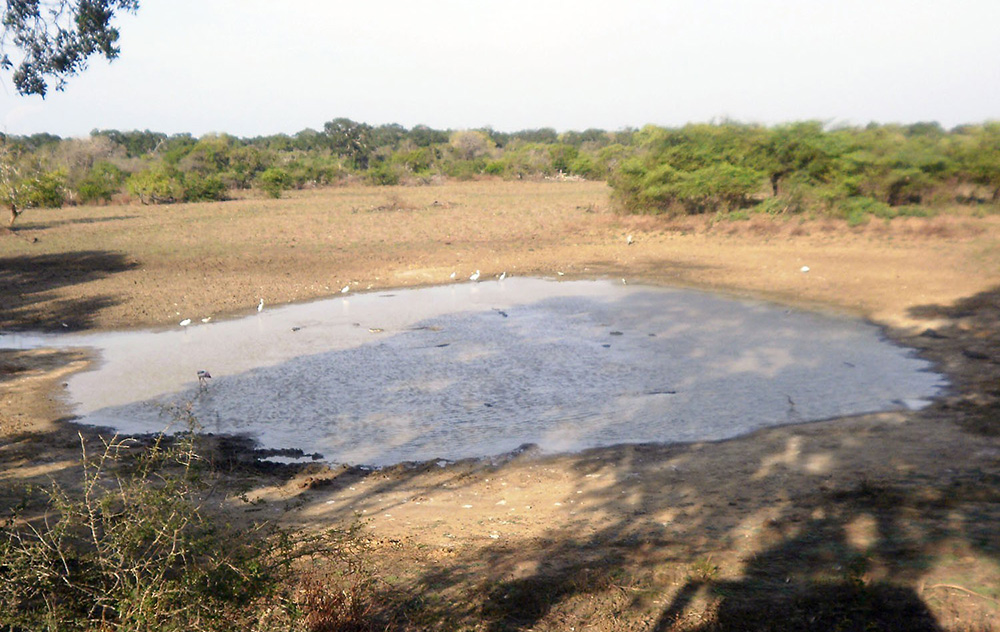
The water came quietly at first, a steady rise along the riverbanks, familiar to communities who have lived beside Sri Lanka’s great waterways for generations. But within hours, these same rivers had swollen into raging, unpredictable forces. The Kelani Ganga overflowed. The Nilwala broke its margins. The Bentara, Kalu, and Mahaweli formed churning, chocolate-brown channels cutting through thousands of homes.
When the floods finally began to recede, villagers emerged to assess the damage, only to be confronted by another challenge: crocodiles. From Panadura’s back lanes to the suburbs of Colombo, and from the lagoons around Kalutara to the paddy fields of the dry zone, reports poured in of crocodiles resting on bunds, climbing over fences, or drifting silently into garden wells.
For many, these encounters were terrifying. But to Sri Lanka’s top herpetologists, the message was clear: this is what happens when climate extremes collide with shrinking habitats.
“Crocodiles are not invading us … we are invading floodplains”
Sri Lanka’s foremost crocodile expert, Dr. Anslem de Silva, Regional Chairman for South Asia and Iran of the IUCN/SSC Crocodile Specialist Group, has been studying crocodiles for over half a century. His warning is blunt.
“When rivers turn into violent torrents, crocodiles simply seek safety,” he says. “They avoid fast-moving water the same way humans do. During floods, they climb onto land or move into calm backwaters. People must understand this behaviour is natural, not aggressive.”
In the past week alone, Saltwater crocodiles have been sighted entering the Wellawatte Canal, drifting into the Panadura estuary, and appearing unexpectedly along Bolgoda Lake.
“Saltwater crocodiles often get washed out to sea during big floods,” Dr. de Silva explains. “Once the current weakens, they re-enter through the nearest lagoon or canal system. With rapid urbanisation along these waterways, these interactions are now far more visible.”
- An adult Salt Water Crocodile (Crocodylus porosus) (Photo -Madura de Silva)
- Adult Mugger (Crocodylus plaustris) Photo -Laxhman Nadaraja
- A Warning sign board
- A Mugger holding a a large Russell ’s viper (Photo- R. M. Gunasinghe)
- Anslem de Silva
- Suranjan Karunarathna
This clash between wildlife instinct and human expansion forms the backdrop of a crisis now unfolding across the island.
A conflict centuries old—now reshaped by climate change
Sri Lanka’s relationship with crocodiles is older than most of its kingdoms. The Cūḷavaṃsa describes armies halted by “flesh-eating crocodiles.” Ancient medical texts explain crocodile bite treatments. Fishermen and farmers around the Nilwala, Walawe, Maduganga, Batticaloa Lagoon, and Kalu Ganga have long accepted kimbula as part of their environment.
But the modern conflict has intensified dramatically.
A comprehensive countrywide survey by Dr. de Silva recorded 150 human–crocodile attacks, with 50 fatal, between 2008 and 2010. Over 52 percent occurred when people were bathing, and 83 percent of victims were men engaged in routine activities—washing, fishing, or walking along shallow margins.
Researchers consistently emphasise: most attacks happen not because crocodiles are unpredictable, but because humans underestimate them.
Yet this year’s flooding has magnified risks in new ways.
“Floods change everything” — Dr. Nimal D. Rathnayake
Herpetologist Dr. Nimal Rathnayake says the recent deluge cannot be understood in isolation.
“Floodwaters temporarily expand the crocodile’s world,” he says. “Areas people consider safe—paddy boundaries, footpaths, canal edges, abandoned land—suddenly become waterways.”
Once the water retreats, displaced crocodiles may end up in surprising places.
“We’ve documented crocodiles stranded in garden wells, drainage channels, unused culverts and even construction pits. These are not animals trying to attack. They are animals trying to survive.”
According to him, the real crisis is not the crocodile—it is the loss of wetlands, the destruction of natural river buffers, and the pollution of river systems.
“When you fill a marsh, block a canal, or replace vegetation with concrete, you force wildlife into narrower corridors. During floods, these become conflict hotspots.”
Past research by the Crocodile Specialist Group shows that more than 300 crocodiles have been killed in retaliation or for meat over the past decade. Such killings spike after major floods, when fear and misunderstanding are highest.
“Not monsters—ecosystem engineers” — Suranjan Karunaratne
On social media, flood-displaced crocodiles often go viral as “rogue beasts.” But conservationist Suranjan Karunaratne, also of the IUCN/SSC Crocodile Specialist Group, says such narratives are misleading.
“Crocodiles are apex predators shaped by millions of years of evolution,” he says. “They are shy, intelligent animals. The problem is predictable human behaviour.”
In countless attack investigations, Karunaratne and colleagues found a repeated pattern: the Three Sames—the same place, the same time, the same activity.
“People use the same bathing spot every single day. Crocodiles watch, learn, and plan. They hunt with extraordinary patience. When an attack occurs, it’s rarely random. It is the culmination of observation.”
He stresses that crocodiles are indispensable to healthy wetlands. They: control destructive catfish populations, recycle nutrients, clean carcasses and diseased fish, maintain biodiversity, create drought refuges through burrows used by amphibians and reptiles.
“Removing crocodiles destroys an entire chain of ecological services. They are not expendable.”
Karunaratne notes that after the civil conflict, Mugger populations in the north rebounded—proof that crocodiles recover when given space, solitude, and habitat.
Floods expose a neglected truth: CEEs save lives—if maintained In high-risk communities, Crocodile Exclusion Enclosures (CEEs) are often the only physical barrier between people and crocodiles. Built along riverbanks or tanks, these enclosures allow families to bathe, wash, and collect water safely.
Yet Dr. de Silva recounts a tragic incident along the Nilwala River where a girl was killed inside a poorly maintained enclosure. A rusted iron panel had created a hole just large enough for a crocodile to enter.
“CEEs are a life-saving intervention,” he says. “But they must be maintained. A neglected enclosure is worse than none at all.”
Despite their proven effectiveness, many CEEs remain abandoned, broken or unused.
Climate change is reshaping crocodile behaviour—and ours
Sri Lanka’s floods are no longer “cycles” as described in folklore. They are increasingly intense, unpredictable and climate-driven. The warming atmosphere delivers heavier rainfall in short bursts. Deforested hillsides and filled wetlands cannot absorb it.
Rivers swell rapidly and empty violently.
Crocodiles respond as they have always done: by moving to calmer water, by climbing onto land, by using drainage channels, by shifting between lagoons and canals, by following the shape of the water.
But human expansion has filled, blocked, or polluted these escape routes.
What once were crocodile flood refuges—marshes, mangroves, oxbow wetlands and abandoned river channels—are now housing schemes, fisheries, roads, and dumpsites.
Garbage, sand mining and invasive species worsen the crisis
The research contained in the uploaded reports paints a grim but accurate picture. Crocodiles are increasingly seen around garbage dumps, where invasive plants and waste accumulate. Polluted water attracts fish, which in turn draw crocodiles.
Excessive sand mining in river mouths and salinity intrusion expose crocodile nesting habitats. In some areas, agricultural chemicals contaminate wetlands beyond their natural capacity to recover.
In Borupana Ela, a short study found 29 Saltwater crocodiles killed in fishing gear within just 37 days.
Such numbers suggest a structural crisis—not a series of accidents.
Unplanned translocations: a dangerous human mistake
For years, local authorities attempted to reduce conflict by capturing crocodiles and releasing them elsewhere. Experts say this was misguided.
“Most Saltwater crocodiles have homing instincts,” explains Karunaratne. “Australian studies show many return to their original site—even if released dozens of kilometres away.”
Over the past decade, at least 26 Saltwater crocodiles have been released into inland freshwater bodies—home to the Mugger crocodile. This disrupts natural distribution, increases competition, and creates new conflict zones.
Living with crocodiles: a national strategy long overdue
All three experts—Dr. de Silva, Dr. Rathnayake and Karunaratne—agree that Sri Lanka urgently needs a coordinated, national-level mitigation plan.
* Protect natural buffers
Replant mangroves, restore riverine forests, enforce river margin laws.
* Maintain CEEs
They must be inspected, repaired and used regularly.
* Public education
Villagers should learn crocodile behaviour just as they learn about monsoons and tides.
* End harmful translocations
Let crocodiles remain in their natural ranges.
* Improve waste management
Dumps attract crocodiles and invasive species.
* Incentivise community monitoring
Trained local volunteers can track sightings and alert authorities early.
* Integrate crocodile safety into disaster management
Flood briefings should include alerts on reptile movement.
“The floods will come again. Our response must change.”
As the island cleans up and rebuilds, the deeper lesson lies beneath the brown floodwaters. Crocodiles are not new to Sri Lanka—but the conditions we are creating are.
Rivers once buffered by mangroves now rush through concrete channels. Tanks once supporting Mugger populations are choked with invasive plants. Wetlands once absorbing floodwaters are now levelled for construction.
Crocodiles move because the water moves. And the water moves differently today.
Dr. Rathnayake puts it simply:”We cannot treat every flooded crocodile as a threat to be eliminated. These animals are displaced, stressed, and trying to survive.”
Dr. de Silva adds:”Saving humans and saving crocodiles are not competing goals. Both depend on understanding behaviour—ours and theirs.”
And in a closing reflection, Suranjan Karunaratne says:”Crocodiles have survived 250 million years, outliving dinosaurs. Whether they survive the next 50 years in Sri Lanka depends entirely on us.”
For now, as the waters recede and the scars of the floods remain, Sri Lanka faces a choice: coexist with the ancient guardians of its waterways, or push them into extinction through fear, misunderstanding and neglect.
By Ifham Nizam
-

 News5 days ago
News5 days agoWeather disasters: Sri Lanka flooded by policy blunders, weak enforcement and environmental crime – Climate Expert
-
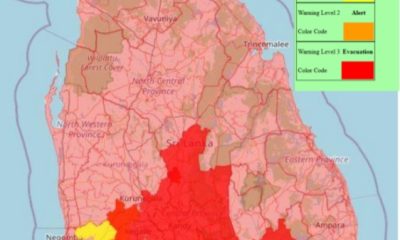
 Latest News6 days ago
Latest News6 days agoLevel I landslide RED warnings issued to the districts of Badulla, Colombo, Gampaha, Kalutara, Kandy, Kegalle, Kurnegala, Natale, Monaragala, Nuwara Eliya and Ratnapura
-
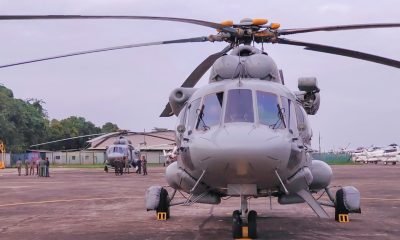
 Latest News6 days ago
Latest News6 days agoINS VIKRANT deploys helicopters for disaster relief operations
-
News2 days ago
Lunuwila tragedy not caused by those videoing Bell 212: SLAF
-

 Latest News6 days ago
Latest News6 days agoDepartment of Irrigation issues Critical flood warning to the Kelani river basin
-

 Latest News3 days ago
Latest News3 days agoLevel III landslide early warnings issued to the districts of Badulla, Kandy, Kegalle, Kurunegala, Matale and Nuwara-Eliya
-

 News6 days ago
News6 days agoCountry reels under worst weather in living memory
-

 Editorial6 days ago
Editorial6 days agoNeeded: Action not rhetoric


